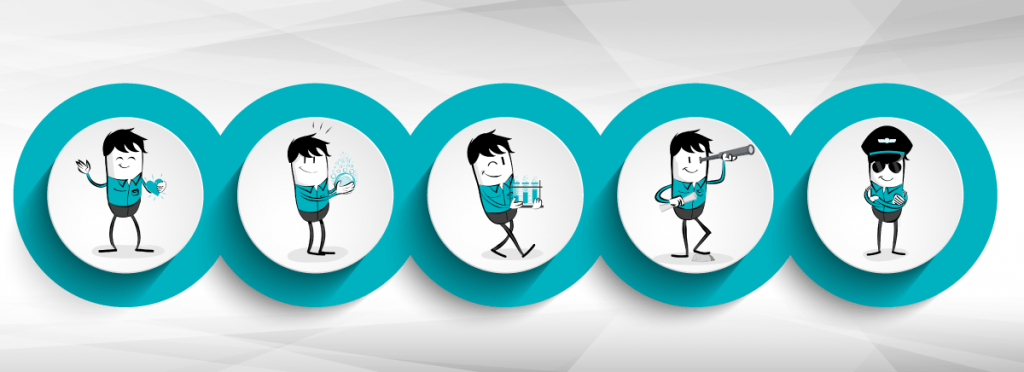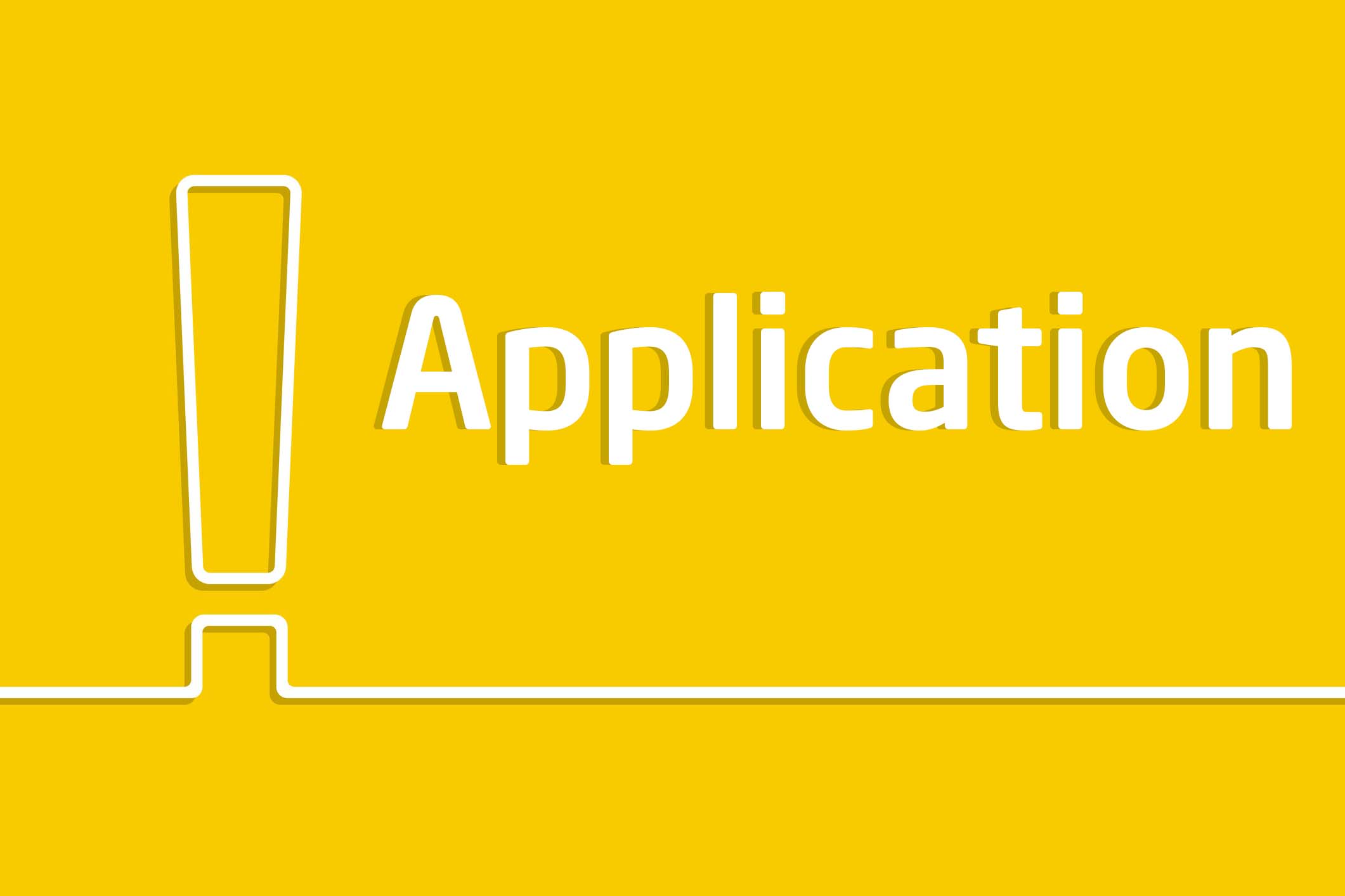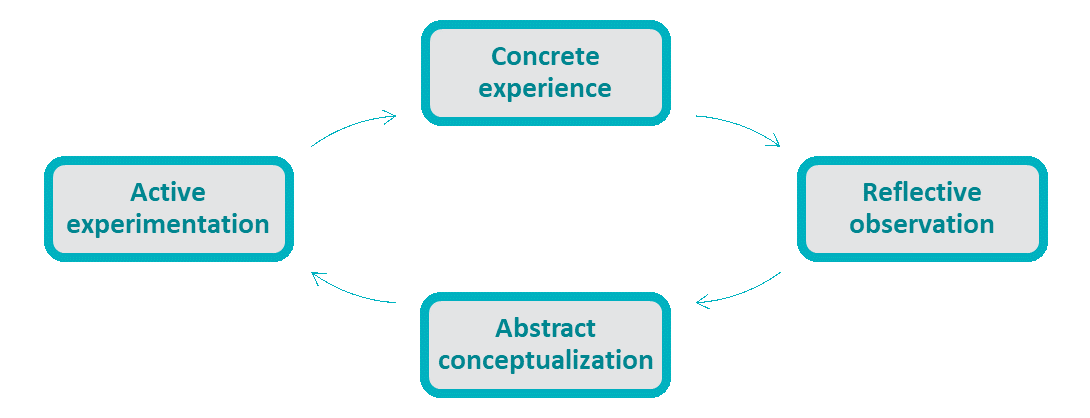5E model for training and learning – 3/ Experiment
Designing a training course involves giving participants the opportunity to activate a range of motivational drivers, so content must be selected and structured with the utmost care. It also means putting participants in problem-solving situations and creating experiences that are powerful enough to change established routines and knowledge.

Solving problems
Cognitive psychology tells us that learning is an active process in which learners form new ideas or concepts based on their existing knowledge. Learners select and transform information, make assumptions and make decisions based on their own cognitive structure.
This cognitive structure provides them with a framework for organising their experiences and making sense of things. The constructivist approach therefore makes learners active problem solvers.
Solving problems means facing situations that challenge our initial understanding of an issue. It's the famous Piagetian transition from assimilation – trying to incorporate new information into existing ideas – to accommodation – changing or replacing existing ideas based on new information. Learning is therefore a dynamic process of seeking balance between the topic and the environment.
In this approach, the essential role of the training designer is to think up problematic situations. According Brown, Collins and Duguid:
"The act of learning is an interpretation of experiences, a language or a phenomenon capitalised on in their context."
Situational learning requires designers to create authentic tasks in contexts that are as realistic as possible. The transition from assimilation to accommodation results in an internal conflict – the cognitive conflict. Changing existing ideas is no mean feat!
Vygotski posited the idea that social interactions play a crucial role in learning. European researchers demonstrated this in the 1970s, using pairs of children who were tasked with resolving an operational problem. Researchers observed that individual progress was most notable when the children disagreed.
Realising that others think differently, and that other positions are possible, leads to a change of cognitive perspective.
Everyone is required to examine both points of view, looking for validity in both parties. The solutions that are found with this kind of process are often more suited to the situation than earlier proposals.

What neuroscience tells us
The importance Vygotski (1896-1934) granted to social relations in learning is backed up by contemporary neuroscience. Researchers see the brain as a social organ that is shaped throughout life by our relations with others.
"Our ability to learn is closely dependant on the quality of our relations with teachers/trainers, as well as our peers, our family, our friends, the community, etc."
Source: Medjad, Gil, Lacroix. Neurolearning. Eyrolles 2017.

Neuroscience therefore teaches us that the quality of relations between trainers, mentors and learners, as well between learners and their managers, etc. are critical for learning.
Socio-cognitive conflict requires a climate of psychological safety – learners must be allowed to make errors, request assistance and feedback without being judged.
“The learning environment is of crucial importance. Too much stress, negative feelings, or a perceived threat (being judged, ridiculed, etc.) short-circuits the thinking mode of the brain and compromises learning. Stress that comes from an achievable and engaging challenge, positive emotions and the feeling of safety create the acceptance of cognitive conflict and bolster the memory trace of the learning.”
Source: Medjad, Gil, Lacroix. Neurolearning. Eyrolles 2017.

Exemplify problem situations that are as close to real life as possible, directly related to working conditions. Incorporate team activities, requiring cooperation and confrontation in an atmosphere of goodwill and the freedom to make mistakes. Refocus the role of the trainer on the creation of conditions for fostering conflict and cooperation.
Learning through experience: experiential learning
According to John Dewey, a proponent of experiential learning (Dewey, 1938), learning is an ongoing and recurrent activity that accompanies every human throughout their life and is deeply rooted in their experience. Learning forms a process for individuals to adapt to their environment.
Using the work of Piaget and Dewey, Kolb posited the learning cycle in 1984:

Kolb’s learning style categories (1984, source wiki.teluq.ca)
Learning is only complete once all phases have been explored:
- Experiencing, which is all about concrete experience. It needs to be as close to that which the learner experiences in the world of work. Learners use their acquired skills to navigate the experience.
- Reflective observation. Learners think about the experience they have had and take a step back to reflect on it.
- Abstract conceptualisation. From experience, learners build general concepts that can be transferred to other situations.
- Active experimentation. Learners create a hypothesis that they test in a new concrete experimentation.
Only the full cycle lets learners learn, i.e. change their knowledge, know-how, behavioural practices and so on. But people differ in the way they prioritise the processing of information. Kolb developed four learning styles after observing that every learner has a preference for using two processes of the cycle.

Give learners the tools for the ‘reflective observation’ phase. Support the explanation of concepts to be retained (generalisation phase) and their prioritisation (see "Explain"). Move away from past experiences and, instead, provide new experiences to validate new concepts.
See also:








